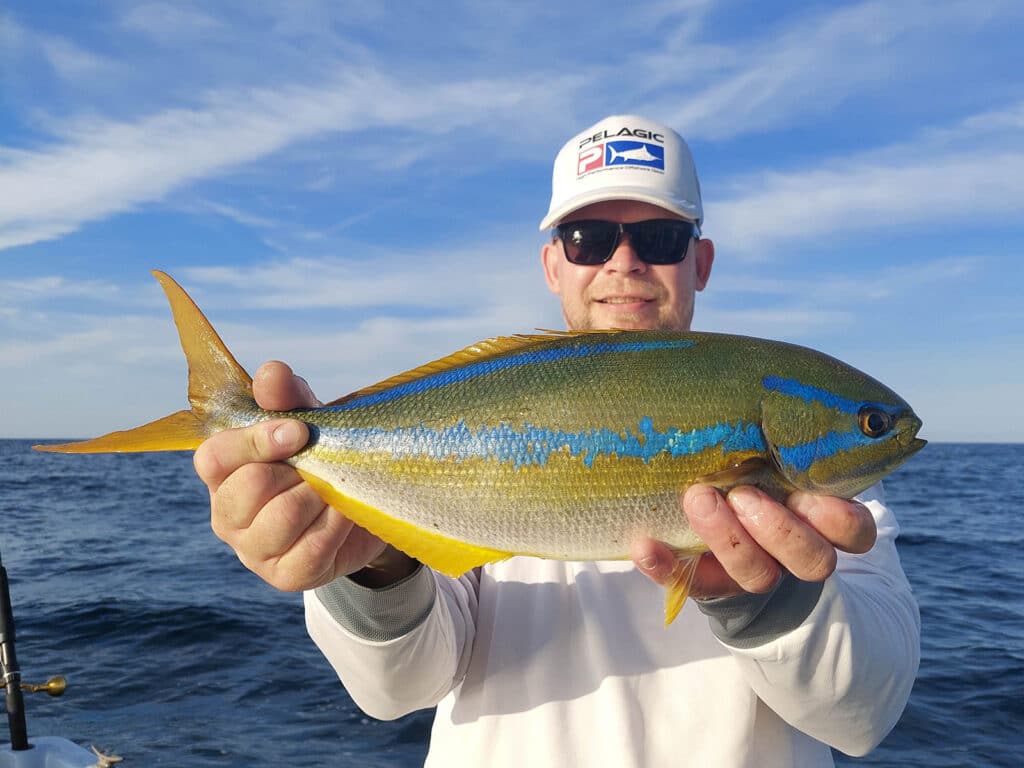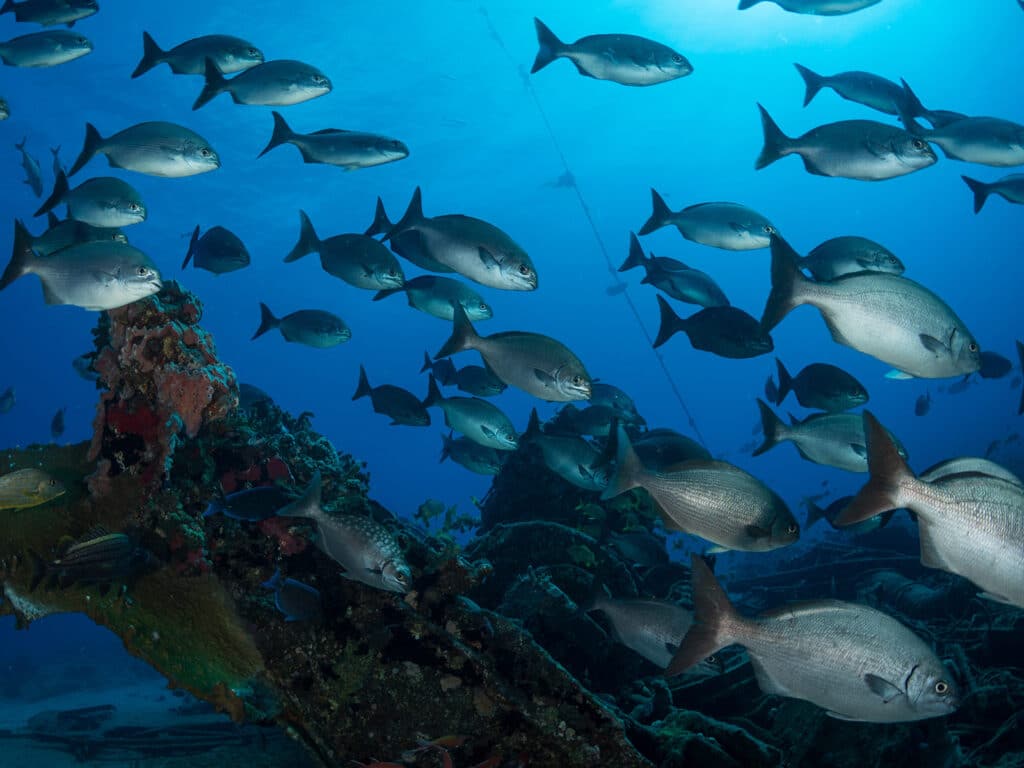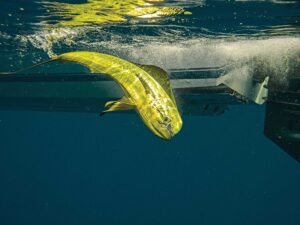
The anglers that pulled up this fish off Pedasi, Panama, were stunned at its colors. They had never caught anything like it. Lodge owner Sam Wadman at Fish Pedasi hadn’t either, and sent the photo to us, noting that he was told by local sources it was something called a “saleema.”
However, salemas are very different fish, though superficially similar in appearance. The salema belongs in the family of porgies, Sparidae. It sports thin gold stripes over a silver body with no blue.
This fish certainly resembled chubs I’d seen in the northern Gulf of Mexico, though with none of these bright colors. Expert ichthyologist Ross Robertson at the Smithsonian Tropical Research Institute immediately identified it as a bluestriped sea-chub, Kyphosus ocyurus. They’re widespread in nearshore Eastern Pacific waters, where they also frequent floating logs and large debris offshore. The species reaches just over two feet in length.
The bluestripe is strictly a plankton eater. As that might suggest, this one was caught when the angler, cranking in a lure at speed, unintentionally snagged it. So, yeah: Not an IGFA-legal capture, but still a cool prize.
Americans are Familiar with the Bermuda Chub

Most Americans who are familiar with chubs likely know a different species, the Bermuda chub (Kyphosus sectatrix). The Bermuda chub is found in all tropical and subtropical waters and is known to eat anything — let’s just say they’re not real fussy. Besides eating benthic algae and small crabs/mollusks (which means that unlike bluestripes, Bermudas can and are caught on small hooks), they’re known to feast on whale feces. And other feces: I’ve observed big schools of them on visits to offshore Gulf oil rigs, where K. sectatrix hang about waiting to eat what comes down from rig workers, all sorts of garbage and human waste.
Hungry much for a Bermuda chub fillet? Surprisingly, a Google search will turn up many accounts of brave souls cleaning Bermuda chubs. Less surprisingly, apparently there’s quite a stench when one is cut open, then revealing nasty-looking gray-green meat. Nevertheless, the consensus among the intrepid eaters seems to be that once cooked, the meat is white, flaky and tasty. Go figure.
Still, I suspect that, just knowing what Bermuda chubs eat, most anglers would take a pass on any chub. But wait! Remember that bluestriped sea-chubs eat only plankton (not poop). So perhaps it’s not surprising that Robertson tells me, “While other chubs have dark flesh that’s not particularly good to eat, K. ocyurus eats a completely different diet and has nice white flesh. I’ve eaten it and can vouch for it!”
So bluestriped chubs not only look great, but taste great too. Unfortunately, they’ll remain elusive for anglers. Time to break out those plankton flies.









